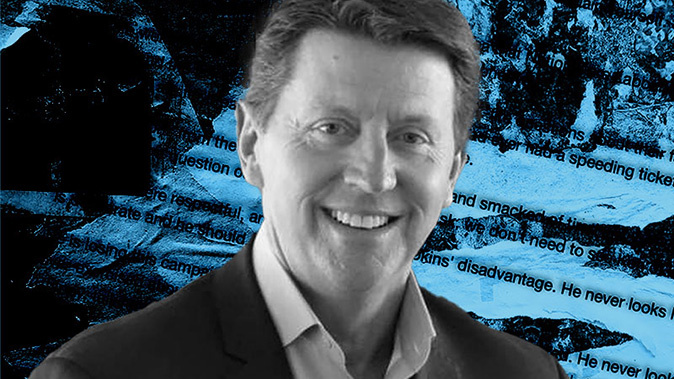
As we near the end of 2023 our attentions turn to 2024. And after the welcome distractions of the Rugby World Cup and, for the moment, the Cricket World Cup, it’s great to have another mammoth sporting event lined up for next year. The Olympics. In Paris.
We’re good at the Olympics. We usually box well above our weight, and while we can’t compete with the US or China on the overall medal haul, we’re often in the top one or two countries in terms of results relative to population size.
And so we should be. We pour millions of dollars into it. Cycling, rowing and yachting are among our biggest financial beneficiaries and have delivered the results in return. We do well on the water. Canoe racing, largely on the back of the efforts of Dame Lisa Carrington, is now in the elite funding pool too, alongside athletics, equestrian, hockey and rugby sevens.
Swimming is one of the glamour events at the Olympics. It’s not as well funded and features infrequently in the medal haul. It’s largely an individual event and the competition is intense. There are regularly more than 70 starters in a single event, all waiting to be whittled down to a final eight from whom the three medallists are decided.
Compare that with rowing, for instance, where the men’s pair features a dozen or so teams chasing the same three medals; or the eights, where there are just seven or eight competitors. It makes sense to put the money into the things that we’re good at and others aren’t.
Despite the challenges, every now and then we manage to produce a superstar swimmer. Danyon Loader, Moss Burmester, and Lauren Boyle fall into that category. They all won world titles and multiple world championship medals. Loader also won three Olympic medals, including two golds.
We now have another swimming superstar in the making. Lewis Clareburt is 24 years old and in the prime of his life for a shot at the 2024 Olympics. He’s already a world championship medallist, a two times Commonwealth Games champion and was in two Olympic finals in the 2020 games in Tokyo. His main event is one of the pool’s toughest. The 400-metre individual medley uses all four swim strokes and takes just over four minutes to complete. In Tokyo, all eight swimmers finished within 2 seconds of each other. Compare that with the women’s 1500m track final, which takes just under four minutes. The top eight athletes were spread over 7 seconds.

The point is this. Clareburt is at the absolute elite level in a highly competitive sport. He’s going to be competing in one of the highest profile Olympic sports. The difference between success and failure comes down to tiny things practised over and over until they become automatic. Time in the water. More time. Repetition is the mother of success.
Last week we learned that, just nine months before the Paris Olympics, Clareburt has reluctantly made the decision to leave his Wellington training base, and his Wellington- based coach, and move to Auckland to continue his preparation. The reason? A lack of suitable training space in the Wellington pools.
Clareburt needs to train in a 50m pool. His races are held in a 50m pool. The Olympics are conducted in a 50m pool. And yet somehow, this guy has been able to become one of the best in the world without regular access to a 50m pool. In Wellington, he has divided his training time between a 50 m pool, a 33m pool and a 25m pool.
In case you’re wondering, Wellington has a 50m pool. It’s called the Wellington Regional Aquatic Centre. According to its website, the pool is owned and operated by the “Absolutely Positive Wellington City Council”.
But Clareburt can’t get the pool time he needs there. Apparently, because the pool is a community facility, the council needs to ensure the community needs are put first.
This “absolutely positive” city council can approve street closures for political rallies despite the impact on nearby retailers, and unnecessary road works that inconvenience thousands of motorists at a time. It has recently approved additional funding for its own poorly managed cost blowouts, despite the inability of ratepayers to afford the rate increases that will follow.
And yet, they can’t clear one lane for five hours a day, at one of their seven swimming facilities to enable a proud local, who happens to be a world- class swimmer, to prepare for an Olympics Games.
And so Clareburt will move to Auckland. Away from his coach, his family, and his medical team. In other words, away from that one factor every world class athlete needs: his support team. He will instead rely on new faces to provide that support as he builds towards his Olympic dream. During my involvement in swimming, at the behest of High Performance Sport NZ, we tried moving young athletes to a centralised training system in the admittedly fabulous facility in Auckland. It didn’t work. Sure, the lane space is world class. But it’s not home.
Those of us who swim know what this is like to be in a crowded lane. It’s especially difficult when everyone is slower than you are. What Wellington’s councillors are asking of our number one swimmer is akin to our rowers sharing Lake Karapiro with a water-skiing competition or our cyclists in the velodrome with the weekend warriors. But that doesn’t happen. It’s not allowed to happen. The authorities make sure it doesn’t happen.
Unfortunately, Clareburt’s lane is even more crowded than it seems. The unseen members of the “Absolutely Positive Wellington City Council” are in his way.
Is this the best we can do?
DECLARATION: Bruce Cotterill is a former board member and chairman of Swimming NZ.
Take your Radio, Podcasts and Music with you









